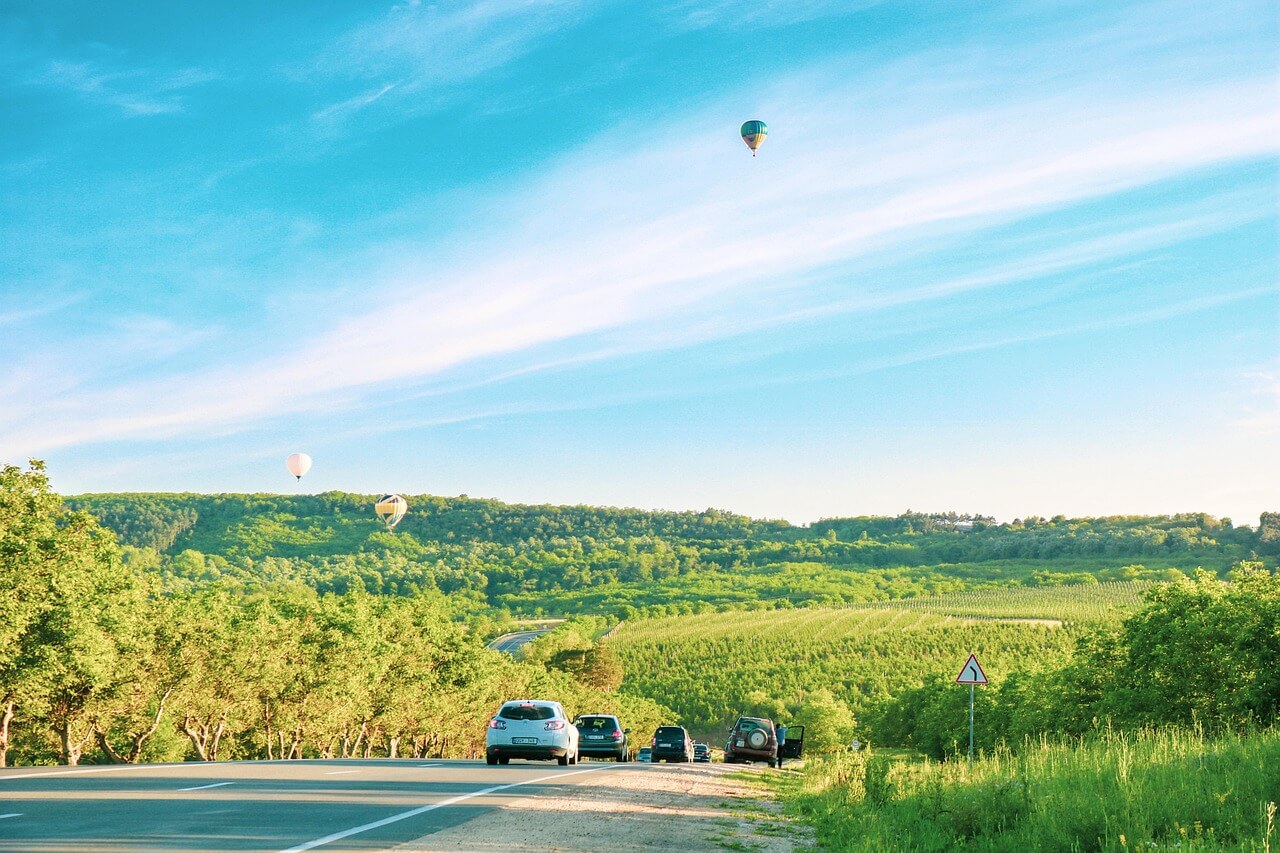When to visit Moldova during the year?
Moldova experiences a temperate continental climate, characterized by warm summers and cold winters. The best time to visit is from late spring to early autumn, where festivals and cultural events abound. Popular summer spots include the lush vineyards of Stefan Voda, where wine tastings attract tourists, along with the beautiful landscapes of the Codrii Nature Reserve. Spring is ideal for exploring the capital, Chisinau, while autumn invites visitors to the famous Grape Harvest Festival, often drawing large crowds. In winter, temperatures can drop significantly, with Bukovina offering scenic snow-covered views for those who enjoy winter sports.
How to get to Moldova?
Reaching Moldova is relatively straightforward, though it may require a few transfers depending on your starting point. The country primarily serves as a crossroads in Eastern Europe, making it accessible by various modes of transportation.
- Main airport: Chișinău International Airport (KIV) serves major routes, including connections from London, Paris, and Istanbul.
- Low-cost airlines: Wizz Air operates budget flights to Moldova from various European cities.
- Flight times: Approximately 2.5 hours from London and around 3 hours from Paris.
- Main stations: Chisinau Bus Station connects Moldova with major destinations like Romania, Ukraine, and Bulgaria.
- Cities they connect: Regular bus services are available from cities such as Bucharest (3-4 hours), Odessa (3 hours), and Kyiv (8 hours).
- International traffic: Limited international train services connect Chisinau with Romania.
- Duration and routes: Train rides to Bucharest take around 12-14 hours.
- Main highways: Major routes include the E581 and E58 leading from Romania and Ukraine.
- Distances: Chisinau is approximately 550km from Bucharest and 260km from Odessa.
- Tolls and road conditions: Certain roads may have tolls; conditions are generally good, especially on main highways.
Tourist activities in Moldova
Moldova offers a rich tapestry of experiences for every type of traveler. Here are some of the best activities categorized by regions and themes:
- Wine Tours: The Milestii Mici winery, known for having the world's largest wine cellar, is a must-visit. Don't miss the chance to wine taste in Cricova, another famous wine producing region.
- Historical Exploration: Chisinau's Stefan Cel Mare Boulevard is lined with historical buildings, including the National Museum of History. Visit the ancient Orheiul Vechi archaeological complex for a glimpse into Moldova's past.
- Cultural Experiences: Participate in the Dance Festival in September, or visit during the national celebration day on August 27th, which showcases traditional music and dance.
- Nature Activities: Explore the Codrii Natural Reserve for hiking and birdwatching, or take a boat ride along the Nistru River for scenic views of the countryside.
- Religious Landmarks: The Capriana Monastery, surrounded by tranquil forests, is a perfect spot for those seeking peace and spiritual experiences.
Accommodation in Moldova
Moldova offers a variety of accommodation options to suit all budgets. In Chisinau, you can find a range of hotels from luxurious five-stars like the Radisson Blu to more modest three-star options. Prices can vary significantly; a standard hotel room averages around €30-€100 per night depending on the season. Outside the capital, charming guesthouses and rural B&Bs in wine country often provide a more personal experience, generally costing around €20-€40 per night. For travelers seeking unique accommodations, consider staying in wine estates or local farms offering authentic Moldovan hospitality.
Food in Moldova
Moldovan cuisine is a delightful fusion of Eastern European, Mediterranean, and Balkan influences. Some noteworthy dishes include Mămăligă (cornmeal porridge), Sarmale (cabbage rolls stuffed with meat), and the beloved Mititei (grilled sausage). Pair your meal with local wines or a glass of Compot, a traditional fruit drink. For a true taste of Moldova, dine at local restaurants like La Taifas in Chisinau, where you can enjoy authentic dishes at an average price of €8-€15 per meal.
Important numbers and information
- Emergency Services: Police - 112, Ambulance - 903, Fire Brigade - 901
- Embassy Contacts: Embassy of your country in Moldova (addresses vary)
- Airports: Chișinău International Airport, 2 Bulevardul Dacia, Chișinău 2026, Moldova
- Currency: Moldovan Leu (MDL) - Payment methods include cash and international credit cards accepted at most establishments.
- Visa/Passport: Most nationalities can enter Moldova visa-free for up to 90 days; check specific requirements based on your nationality.
What to see in Moldova?
Moldova is dotted with intriguing sights that tell its historical and cultural story. Here are some must-visit locations:
- Chisinau: The capital city, where you can explore parks, museums, and the vibrant street life.
- Orheiul Vechi: An archaeological complex showcasing ancient settlements and stunning landscapes.
- Cricova: Famous for its vast underground wine cellars, ideal for wine enthusiasts.
- The Stefan Cel Mare Park: A central park featuring a beautiful lake and plenty of green space for relaxation.
- Transnistria: A breakaway region that feels like a step back in time, with Soviet remnants and unique cultural experiences.
History, geography and climate
Moldova's history is rich and complex, shaped by its strategic location between Romania and Ukraine. Once part of the Soviet Union, it gained independence in 1991. Geographically, the landscape is primarily flat with hills in the central region, and the Nistru River forming part of its eastern border. The country experiences a temperate continental climate, with average temperatures ranging from -1°C in January to 25°C in July, making it ideal for both summer and winter activities.
Population and culture
Moldova has a population of approximately 2.6 million. The majority speaks Romanian, with Russian and Ukrainian also widely understood. The country is predominantly Eastern Orthodox, with many religious and cultural traditions. Unique to Moldova are its rich folk customs, often showcased during festivals such as the Martisor celebration in March, where locals exchange handmade amulets. Other notable traditions include traditional music and dances, and a strong emphasis on hospitality during family gatherings and holidays.








